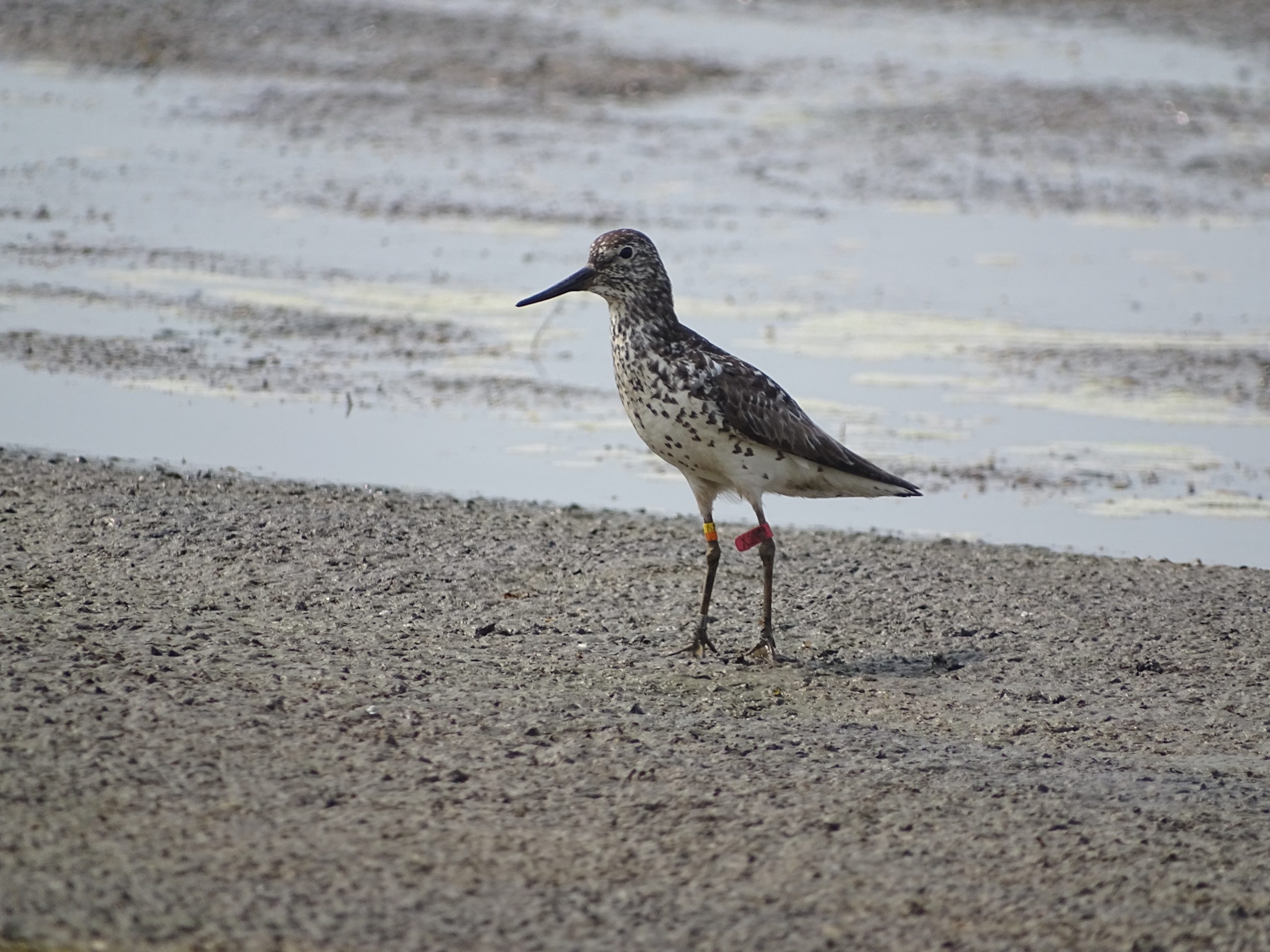The 2020 season studying the breeding ecology of endangered Nordmann’s Greenshanks (Tringa guttifer) and Common Redshanks (Tringa totanus ussuriensis) in Schaste Bay, Khabarovsk Krai, Russia was a success despite the logistical difficulties caused by Covid-19.

Nordmann’s Greenshank (Yellow over Orange,X2) ©Vladimir Pronkevich
Undeterred by being short staffed due to the pandemic and resultant travel restrictions (for example, US-based MS student Philipp Maleko was unable to join the team, as were others), Dr. Vladimir Pronkevich and Dr. Konstantin Maslovsky reached the remote wilderness of Schaste Bay in mid-May and stayed until mid-August. To communicate with the outside world, the team installed a satellite dish on the roof of their base camp and established a stable internet connection. The connection allowed the crew to share updates and consult with research partners stuck at home. This was crucial in boosting team morale and facilitating research collaboration.
One of the most significant outcomes of the 2020 season was finding a pair of Nordmann’s Greenshank nesting on the ground of an inland hummocky bog. This is notable because not only is this the seventh nest of this species ever found, it is also the first time this species has been found nesting on the ground. The nest was placed in a thicket of crowberry (Empetrum nigrum) underneath a few sapling larches, approximately 1.5 km from the Schaste Bay mudflats. The nest cup was lined with small larch twigs, dry leaves, and several lichen species. The pair nested together in 2019 and were banded by our team with two chicks in early July, indicating the species may maintain pair bonds throughout the year and for multiple breeding seasons. This newly discovered breeding behavior highlights how little we know about Nordmann’s Greenshank breeding ecology and life history.

First record of Nordmann’s Greenshank nesting on the ground. ©Konstantin Maslovsky

First record of Nordmann’s Greenshank nesting on the ground. ©Konstantin Maslovsky
Throughout the season the team was able to resight five Nordmann’s Greenshanks we banded in 2019 and banded two new individuals. One individual (T1, orange over dark green) was seen in the Republic of Korea’s Hwaseong Wetlands Flyway Network Site only two weeks after it left Schaste Bay. The team was able to resight 10 Common Redshank banded in 2019, found 19 nests, collected a plethora of nest site characteristics to evaluate the species nest-site selection, and banded 17 adults and 34 chicks. The nest-site selection data is undergoing analysis.
A critical part of the 2020 season was surveying different sections of Schaste Bay for breeding and migratory Nordmann’s Greenshanks, as was done in previous years. This is important to establish baseline datasets on the species’ population trend on its breeding grounds. The team found 76 adults, representing 60 migratory individuals and 12 breeding pairs. This emphasizes that Schaste Bay warrants being designated as a Ramsar site, and further underscores the need to establish it as a protected area.
Besides ornithological research, the team was able to strengthen relationships with several individuals in the local community. These relationships are crucial in acquiring intimate knowledge of the ecological landscape, in understanding the different socio-economic and cultural pressures shorebird populations face in the area, and for establishing long-term research stations in Schaste Bay and other bays of central Khabarovsky Province. The team is already making plans for the 2021 breeding season, including expanding research efforts to Konstantin and Tugur Bays.
Prepared by Vladimir Pronkevich, Konstantin Maslovsky, and Philipp Maleko.
Vladimir Pronkevich (Khabarovsk Federal Research Center, Institute of Water and Ecology Problems, Far Eastern Branch, Russian Academy of Sciences)
Konstantin Maslovsky (Federal Scientific Center of the East Asia Terrestrial Biodiversity, Russian Academy of Sciences)
Philipp Maleko (Florida Cooperative Fish and Wildlife Research Unit, University of Florida, Gainesville)
Funding support for the 2020 Nordmann’s greenshank field season was provided by EAAFP Small Grants Programme, Wildlife Conservation Society, and World Wildlife Fund.




